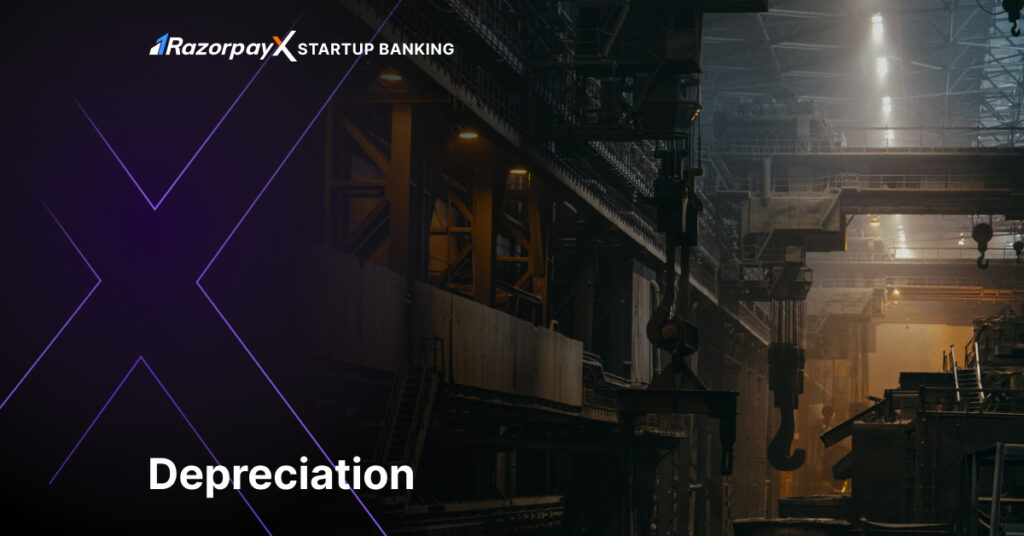What is Depreciation?
Depreciation is when a tangible asset loses value over time due to wear and tear. This loss in value has to be accounted for when preparing a business’s financial statements.
When intangible assets lose value, it is called amortization, and when an asset gains value, it is called appreciation.
Importance of Depreciation
- It helps to spread the cost of a long-term asset over the useful life of the asset, providing an accurate measure of the asset’s value.
- Assets provide value to a business over an extended period of time, but also incur expenses for the business – this expense is calculated over a period of time and is called depreciation.
- Profit that is calculated without taking depreciation into account is a false value, since it is an expense, and expenses reduce a business’s profits.
- It is considered a non-cash expense since it reduces profits but there is no actual cash outflow.
How is Depreciation Calculated?
Straight Line Method
In this method, the same value is deducted from the total value of the asset every year, till the salvage value of the asset is reached.
The salvage value is the minimum amount that the business expects to get back from selling the asset at the end of its useful life.
Let’s say a bakery buys an oven for Rs 5,00,000. The useful life of this oven is estimated to be 7 years, and every year the bakery deducts 15,000 as depreciation. Over the course of 7 years, Rs 1,05,000 is deducted from the purchase price of the oven. Finally, at the end of the 7th year, if the bakery decides to sell the oven, it can do so for this final price after deducting depreciation.
Declining Balance Method
Under the declining balance depreciation method, the value of the asset is depreciated every year against the depreciated value.
This gives a more accurate view of the true value of the asset. For example, let’s assume an asset is purchased for Rs 5,00,000, and the depreciation rate is 10%. The salvage value agreed upon is Rs 3,00,000.
It will be calculated in this way:
| Year | Starting Asset Value | Depreciation (10%) | Asset Value |
| 1 | 5,00,000 | 50,000 | 4,50,000 |
| 2 | 4,50,000 | 45,000 | 4,05,000 |
| 3 | 4,05,000 | 40,500 | 3,64,500 |
| 4 | 3,64,500 | 36450 | 3,28,050 |
| 5 | 3,28,050 | 32,805 | 2,95,245 |
In this way, the asset will be worth Rs 2,95,245 in the fifth year of its use. The depreciation rate remains constant, but the depreciated amount is calculated on a deducted amount every year.
Double-Declining Method
The double declining balance method is an accelerated method that allows for a larger deduction in the earlier years of a depreciable asset’s life.
It works by taking the asset’s cost and multiplying it by a double declining rate. The result is the annual depreciation expense, which is then subtracted from the asset’s net book value each year.
This method allows a company to save on taxes by deducting a larger depreciation expense in the early years of the asset’s life, thus reducing taxable income.
Depreciation vs Amortization vs Appreciation
| Depreciation | Amortization | Appreciation |
| Reduction in value of a tangible asset | Reduction in value of an intangible asset | Increase in value of tangible or intangible asset. |
| Applies to tangible assets like machinery | Applies to intangible assets like patents | Can apply to tangible or intangible assets, like currency or land |
Accumulated Depreciation
- The total depreciation of a certain asset is calculated and put on the balance sheet as accumulated depreciation.
- Accumulated depreciation is recorded as a contra asset or a deduction to the asset side of the Balance Sheet.
- Both depreciation as an accumulated concept and as an expense is important in the calculation of profit for a business.
- For businesses that are looking to manage their finances in a cost–effective manner, RazorpayX is the perfect solution to track expenses.
- RazorpayX’s accounting and tax management solutions provide a comprehensive system for businesses to take control of their finances and make decisions that are beneficial in the long term.



